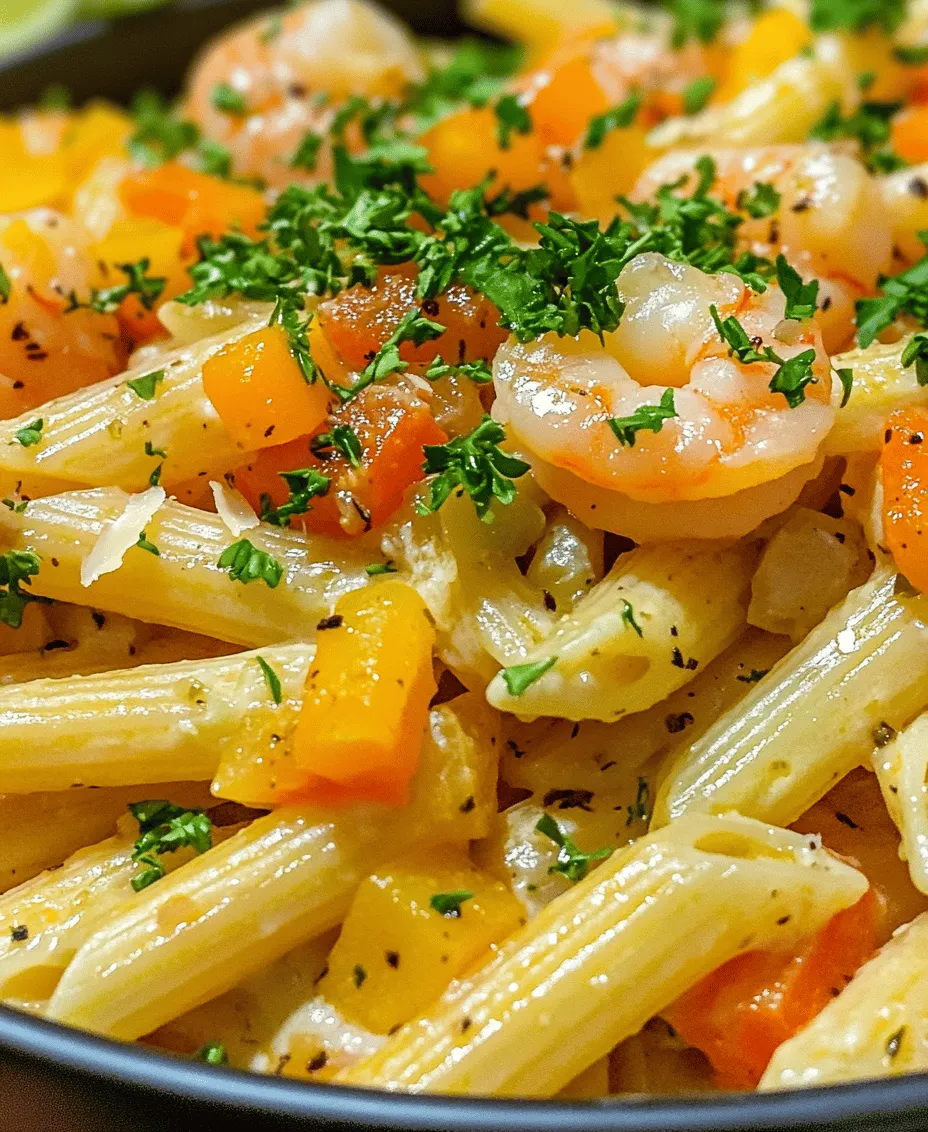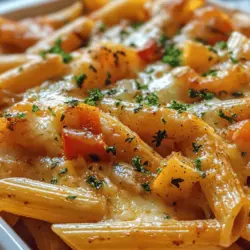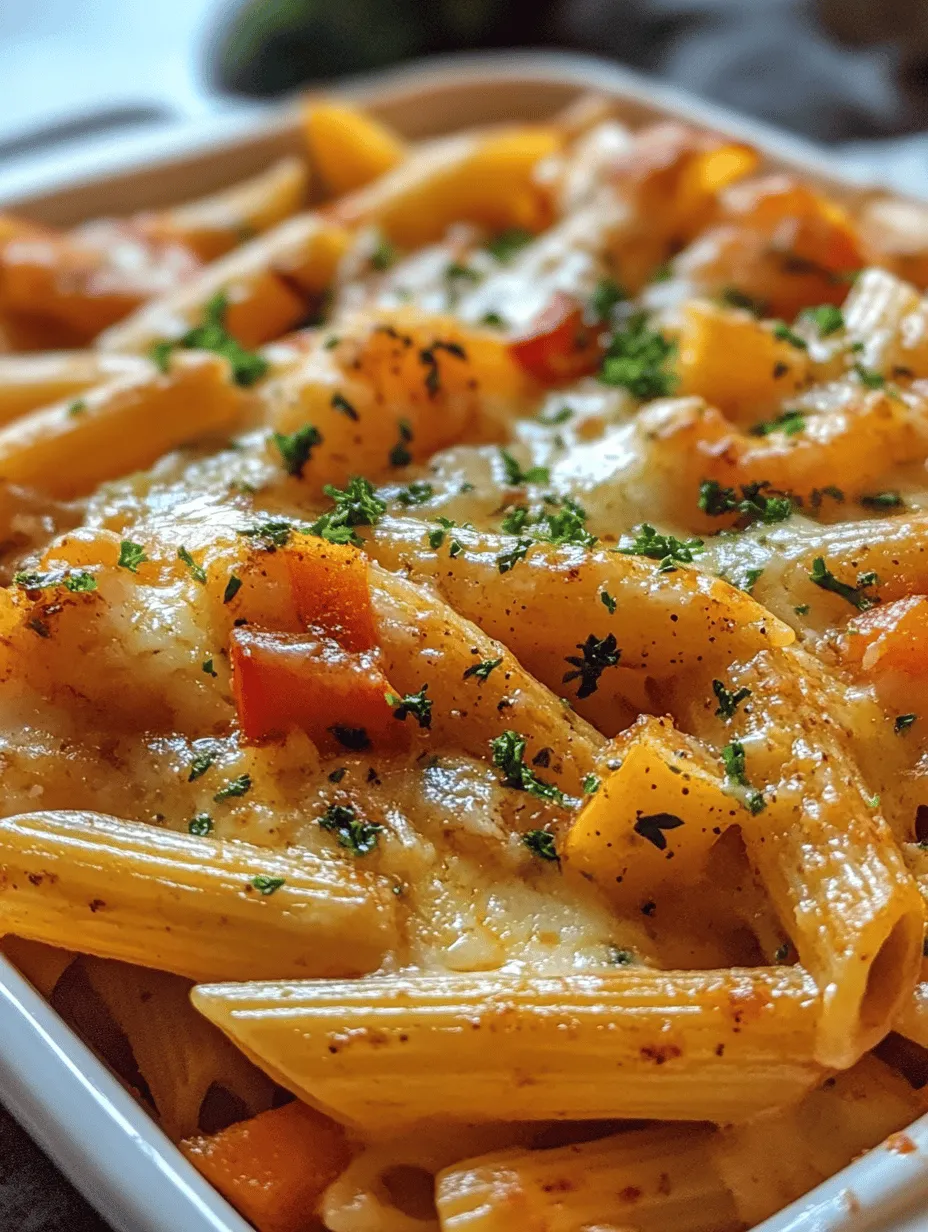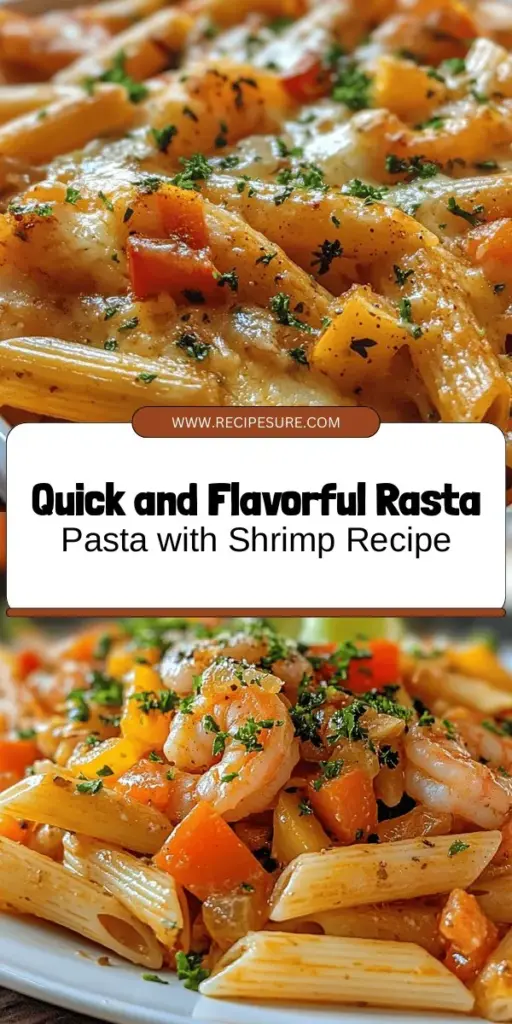Introduction
Rasta Pasta is a vibrant and colorful dish that merges the essence of Caribbean cuisine with a touch of Italian flair. Originating in Jamaica, this dish is a celebration of flavors, textures, and bold spices that reflect the rich cultural tapestry of the islands. The combination of perfectly cooked pasta, succulent shrimp, and a creamy coconut milk sauce creates a meal that is not only visually appealing but also incredibly satisfying to the palate.
In today’s fast-paced world, the demand for quick yet flavorful meals has never been greater. Rasta Pasta with shrimp is the perfect solution for busy individuals and families who wish to enjoy a delicious dinner without spending hours in the kitchen. The beauty of this dish lies in its simplicity; it brings together fresh ingredients and spices to create a meal that is both nourishing and bursting with flavor.
Understanding Rasta Pasta
Rasta Pasta is more than just a meal; it is a representation of Caribbean culture and culinary traditions. The dish draws its name from the Rastafarian movement, which originated in Jamaica and is deeply intertwined with the island’s identity. The vibrant colors of Rasta Pasta, often inspired by the red, green, and gold of the Rastafarian flag, symbolize the richness of the Caribbean landscape and the diversity of its people.
The cultural significance of Rasta Pasta is reflected in its ingredients, which include fresh vegetables, spices, and proteins that are staples in Caribbean cooking. This dish is a testament to the ability of Caribbean cuisine to adapt and innovate, blending various culinary influences while maintaining its roots. The use of jerk seasoning, for example, adds a distinct flavor that is synonymous with Jamaican cooking, while the pasta itself speaks to the Italian influence on Caribbean dining.
The vibrant colors and flavors of Rasta Pasta create a sensory experience that transports you straight to the tropical paradise of the Caribbean. The dish is not only a feast for the eyes but also a delightful journey for the taste buds, with each bite offering a harmonious blend of sweetness, heat, and creaminess.
Ingredients Breakdown
To create a delicious Rasta Pasta with shrimp, you’ll need a selection of fresh and flavorful ingredients. Here’s a detailed breakdown of the components that make this dish unique:
- Penne Pasta: When it comes to pasta choices, penne is an excellent option due to its tubular shape, which allows it to hold onto the creamy sauce and flavors. The ridges on the penne create an ideal surface for capturing the sauce, ensuring that each bite is bursting with flavor. While penne is a popular choice, feel free to experiment with other pasta types such as fusilli or farfalle for a fun twist.
- Shrimp: The star of this dish is undoubtedly the shrimp. Using fresh shrimp is crucial for achieving a tender and juicy texture. If fresh shrimp is unavailable, make sure to select high-quality frozen shrimp, ensuring they have been properly thawed before cooking. The shrimp not only adds protein but also contributes a slightly sweet flavor that complements the coconut milk beautifully.
- Olive Oil: A staple in many kitchens, olive oil is an essential ingredient in this recipe. It serves as the base for sautéing the vegetables and shrimp, imparting a rich flavor while providing healthy monounsaturated fats. Its high smoke point makes it suitable for sautéing without burning, allowing you to cook your ingredients to perfection.
- Vegetables: Onion and bell peppers play a crucial role in enhancing the flavor of Rasta Pasta. The onion provides a sweet and aromatic base, while the bell peppers add a pop of color and crunch. Choose a mix of red, yellow, and green bell peppers for a truly vibrant presentation.
- Coconut Milk: The creamy texture of coconut milk is what sets Rasta Pasta apart from traditional pasta dishes. It adds a tropical flavor that balances the heat of the jerk seasoning and complements the other ingredients. Opt for full-fat coconut milk for a rich and velvety sauce that envelops the pasta and shrimp.
- Chicken Broth: To enhance the depth of flavor in the sauce, chicken broth is used alongside coconut milk. The broth brings a savory note that ties all the elements together, creating a luscious sauce that clings to the pasta.
- Jerk Seasoning: No Rasta Pasta would be complete without jerk seasoning. This spice blend is a hallmark of Jamaican cuisine, incorporating ingredients such as allspice, thyme, cinnamon, and scotch bonnet peppers. The level of heat can vary, so adjust the amount based on your personal preference for spice.
- Fresh Parsley and Lime: To finish off the dish, fresh parsley adds a burst of color and freshness, while a squeeze of lime brightens the flavors. These garnishes not only enhance the presentation but also provide a refreshing contrast to the rich coconut sauce.
Preparation Steps
Now that you’ve gathered all the necessary ingredients, it’s time to dive into the preparation steps for Rasta Pasta with shrimp. This recipe is designed to be straightforward, allowing you to whip up a delicious meal in no time.
Cooking the Pasta
Begin by bringing a large pot of salted water to a boil. Salting the water is crucial, as it enhances the pasta’s flavor as it cooks. Use about a tablespoon of salt for every four quarts of water. Once the water reaches a rolling boil, add the penne pasta and cook according to the package instructions until al dente. Al dente pasta is firm to the bite, retaining its shape and providing a pleasant texture in the final dish.
While the pasta cooks, be sure to reserve about a cup of the pasta water before draining. This starchy water can be added to the sauce later to achieve the perfect consistency.
Once the pasta is cooked, drain it and set it aside. Do not rinse the pasta, as this will wash away the starch that helps the sauce adhere.
Sautéing the Vegetables
In a large skillet or sauté pan, heat a couple of tablespoons of olive oil over medium heat. Once the oil is shimmering, add the chopped onion and sauté until it becomes translucent, about 3-4 minutes. The aroma of the sautéing onions will fill your kitchen, setting the stage for the flavors to come.
Next, toss in the sliced bell peppers and continue to sauté for another 3-5 minutes until they soften but still retain some crunch. The vibrant colors of the bell peppers will not only enhance the visual appeal of your dish but also contribute a subtle sweetness and freshness.
As the vegetables cook, you can prepare the shrimp. Make sure to peel and devein the shrimp if it hasn’t been done already. Once the vegetables are cooked to your liking, push them to one side of the skillet and add the shrimp to the other side. Sauté the shrimp until they turn pink and opaque, which usually takes about 2-3 minutes per side.
Bringing It All Together
After the shrimp is cooked, add the reserved pasta to the skillet, followed by the creamy coconut milk and chicken broth. Stir everything together, allowing the flavors to meld. If the sauce appears too thick, gradually add some of the reserved pasta water until you reach the desired consistency.
Finally, sprinkle in the jerk seasoning, adjusting the amount to suit your taste preferences. Stir in the fresh parsley and finish with a squeeze of lime juice to brighten the dish.
With these preparation steps completed, you’re well on your way to enjoying a delightful plate of Rasta Pasta with shrimp, showcasing the vibrant flavors and colors of the Caribbean! Enjoy the fusion of cultures and tastes that this dish brings to your dining table.

Techniques for Achieving the Right Texture in Onions and Peppers
To create a perfectly balanced Rasta Pasta with shrimp, it’s essential to achieve the right texture in your onions and peppers. Start by slicing your onions thinly; this allows them to caramelize evenly and develop a sweet flavor without becoming mushy. For the bell peppers, cut them into strips or bite-sized pieces. This size ensures they cook through while maintaining a satisfying crunch that contrasts beautifully with the tender pasta.
When sautéing these vegetables, cook them over medium heat. This temperature encourages even cooking without burning. Stir frequently and keep an eye on the onions; they should become translucent and slightly golden—this indicates that the sugars are caramelizing. The peppers should retain some of their firmness, adding texture to the dish.
Importance of Garlic and How It Contributes to the Dish’s Aroma
Garlic is a crucial ingredient in this Rasta Pasta recipe, not just for its flavor but for the rich aroma it imparts. When you sauté minced garlic, it releases essential oils that enhance the overall scent of your dish. For this recipe, using fresh garlic is highly recommended; its pungency and depth of flavor cannot be matched by powdered alternatives.
Add the minced garlic to your pan just after the onions have started to soften. This timing prevents the garlic from burning, which can introduce an unpleasant bitterness. Allow it to sauté for about 30 seconds until fragrant, ensuring that it doesn’t turn brown.
Preparing the Shrimp
Shrimp preparation is straightforward but pivotal for the success of your dish. Begin by peeling and deveining your shrimp if they aren’t already prepped. This step not only improves the shrimp’s texture but also enhances the dish’s presentation. Rinse the shrimp under cold water and pat them dry with paper towels; this helps achieve a nice sear when cooking.
Best Practices for Cooking Shrimp: Timing and Seasoning
Cooking shrimp is a quick process that requires careful timing. Overcooking can lead to rubbery, tough shrimp, so it’s vital to keep an eye on them. Season your shrimp with salt, pepper, and a sprinkle of paprika for a subtle kick before adding them to the pan.
Incorporate the shrimp into your sautéed mixture of onions, peppers, and garlic. Cook them for 2-3 minutes on each side until they turn pink and opaque. A visual cue for perfectly cooked shrimp is when they curl into a C-shape; this indicates they are done.
Creating the Sauce
The sauce is the heart of your Rasta Pasta, blending coconut milk and chicken broth for a creamy yet light texture. Begin by combining these two liquids in your pan, stirring to mix thoroughly.
Explanation of Simmering and Its Role in Flavor Development
Simmering is a cooking technique that allows the ingredients to meld together without boiling. Once you’ve added your coconut milk and broth to the pan, bring it to a gentle simmer. This process allows the flavors from the vegetables and seasonings to infuse into the sauce.
It’s important to adjust the heat to maintain a simmer; if the sauce boils, it may reduce too quickly and lose flavor. Allow it to simmer for 5-10 minutes, stirring occasionally, until it thickens slightly.
Discussion on the Balance Between Coconut Milk and Chicken Broth
The balance between coconut milk and chicken broth is key to achieving the right flavor profile for your Rasta Pasta. The coconut milk adds creaminess and a subtle sweetness, while the chicken broth brings a savory depth. You can adjust the ratio based on your preference; for a richer sauce, increase the amount of coconut milk. Conversely, for a lighter sauce, add more broth.
Combining with Pasta
Once your sauce has reached the desired consistency, it’s time to combine it with the pasta. Add your cooked pasta directly to the pan and gently toss it in the sauce to ensure every strand is coated. The sauce should cling to the pasta, enhancing its flavor with every bite.
Importance of Coating Pasta in the Sauce for Maximum Flavor
Coating the pasta in the sauce is essential for maximizing flavor. The starch from the pasta helps thicken the sauce, allowing it to adhere better. If the sauce seems too thick, a splash of pasta water can loosen it without sacrificing flavor. Tossing the pasta in the sauce also helps to evenly distribute the shrimp and vegetables, ensuring a perfect bite every time.
Tips on Ensuring Even Heat Distribution
To ensure even heat distribution, consider tossing the pasta over low heat for another minute. This final step allows the pasta to absorb some of the sauce, enhancing its flavor. Stir gently to avoid breaking the shrimp and vegetables, maintaining their beautiful presentation.
Serving Suggestions
Presentation Ideas for Rasta Pasta
Presentation plays a crucial role in making your Rasta Pasta visually appealing. Serve the dish in a large bowl, garnishing it with freshly chopped parsley or cilantro. A sprinkle of red pepper flakes can add a pop of color and a hint of heat. For a tropical touch, serve with lime wedges on the side, allowing guests to squeeze fresh juice over their portions.
Pairing Recommendations (e.g., Side Dishes, Beverages)
Rasta Pasta pairs well with a variety of side dishes. A simple green salad with a light vinaigrette complements the richness of the pasta. For a heartier side, consider serving it with garlic bread or plantain chips, which add texture and flavor.
When it comes to beverages, a chilled glass of white wine, such as Sauvignon Blanc, cuts through the creaminess of the dish beautifully. Alternatively, a refreshing tropical drink, like a mango smoothie, enhances the Caribbean flair of your meal.
Optional Toppings: Exploring the Use of Grated Parmesan Cheese
While traditional Rasta Pasta doesn’t typically include cheese, a light sprinkle of grated Parmesan can elevate the dish, adding a salty, nutty flavor that complements the creaminess of the sauce. For a vegan option, consider nutritional yeast as an alternative, which offers a cheesy flavor without dairy.
Nutritional Insights
Overview of the Nutritional Benefits of the Main Ingredients
Rasta Pasta with shrimp is not only a feast for the eyes but also a nourishing dish. Shrimp is a rich source of lean protein, making it an excellent choice for those looking to maintain or build muscle.
Shrimp as a Lean Protein Source
Shrimp is low in calories yet high in protein, providing about 20 grams of protein per 3-ounce serving. This makes it an ideal ingredient for those on a low-calorie diet or anyone looking to incorporate more protein into their meals without excess fat.
Health Benefits of Coconut Milk
Coconut milk, while creamy and delicious, also offers health benefits. It contains medium-chain triglycerides (MCTs) that are quickly metabolized by the body for energy. Additionally, it contains lauric acid, known for its antibacterial properties.
Nutritional Value of Vegetables Used
The bell peppers and onions in Rasta Pasta contribute essential vitamins and minerals. Bell peppers are high in vitamin C, which supports the immune system, while onions contain antioxidants that are beneficial for heart health. Together, these vegetables enhance the dish’s nutritional profile, making it a wholesome meal option.
Conclusion
Rasta Pasta with shrimp is a delightful dish that captures the vibrant essence of Caribbean cuisine. Its quick preparation time combined with bold flavors and stunning presentation makes it a perfect addition to your weekly meal rotation. With its creamy coconut base, colorful vegetables, and tender shrimp, this dish appeals to the palate and the eye.
Incorporating Rasta Pasta into your cooking repertoire allows you to experience a taste of the Caribbean in the comfort of your home. The joy of cooking and sharing meals with loved ones is a timeless tradition, and this recipe embodies that sentiment. So gather your ingredients, put on some reggae music, and enjoy a culinary journey that brings warmth and flavor to your table.


